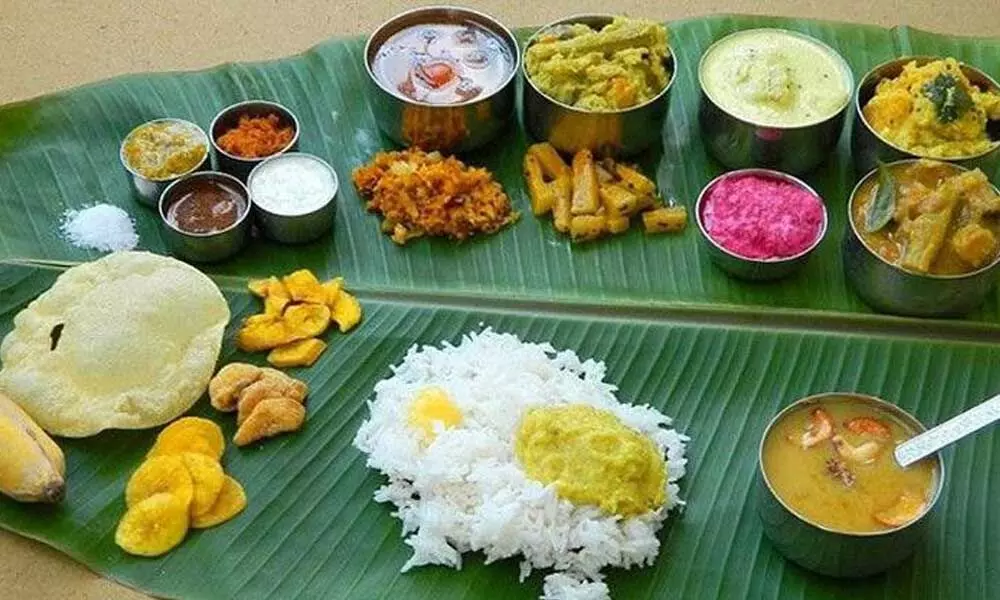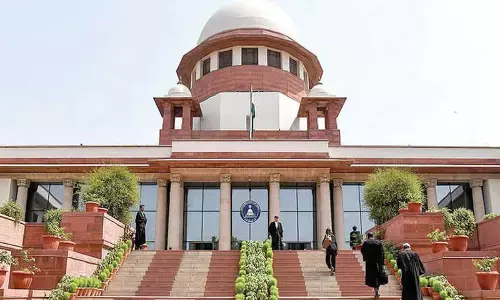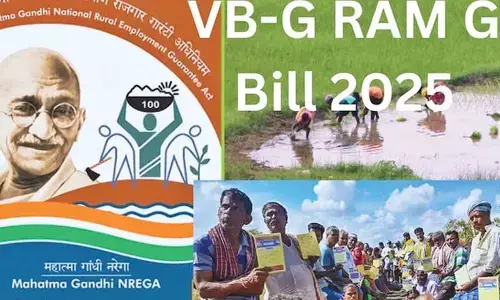The great Indian food and medicine dilemmas

The great Indian food and medicine dilemmas
Does God exist? Is there life after death? When did time begin? Which came first-the hen or the egg? These are among some of the most intriguing puzzles that constantly tease our brains. Ironically, answers to such posers remain unanswered.
Does God exist? Is there life after death? When did time begin? Which came first-the hen or the egg? These are among some of the most intriguing puzzles that constantly tease our brains. Ironically, answers to such posers remain unanswered.
There are two more equally troublesome questions for which answers are as elusive as those that have haunted mankind. Thy are: 1) What kind of food (rice or wheat or millets or something else) should we eat to lead a healthy life? 2) Which system of medicine (allopathy or ayurveda or homeopathy or something else) can we be dependent on for providing the perfect cure to all ailments?
People are in a fix to arrive at some conclusions by way of answers for these two vital questions. Every health-conscious citizen is in an utter state of confusion as they are bombarded by vociferous arguments and counters put forth by the food crusaders championing their own brand of foods and medicinal systems. With panacea nowhere in sight, the hapless citizens are trying everything and spending heavily even while putting their life in peril.
What to eat?
Everything was more or less honky-dory till the dawn of the new millennium. We used to devour rice, curries and pickles thrice a day along with curd.There never was (and never will) a dearth of delicacies for non-vegetarians.
For Telugu-speaking people, pickles like avakaya (mango), gongura (sorrel leaves), chintakaya (tamarind) and nimma kaya (lemon), were an intrinsic part of their cuisine. Jars filled with a dozen types of mango pickles, most of them prepared in summer by the family grannies and elders, would invariably occupy a pride of place on the dining table. The meal of our grandparents and parents was incomplete without having avakaya badda (a piece of mango pickle). Kids used to go to school after eating the leftover meal, called chaddiannam, with the available pickle, in the absence of 'tiffins.'Idli, vada, dosa, puri, bread etc replaced this traditional food as 'light' breakfast food.
Alas, of late, those who relished the abovementioned pickles went into an altogether different phase with doctors suggesting people to shun them forthwith. Our poor avakaya has become a banned substance now. The consumption of chaddiannam is now viewed as anuncivilised act and yummy curd and ghee are considered as a grave threat to our nerves system. Sprouts were suggested as a healthy breakfast meal but even this faded away in course of time.
All said and done, rice is our staple food, unlike North Indians. Slowly chapathis made their way into our meal. The wheat-made product became the evening meal of people, especially aged persons suffering from diabetes. The era of chapathis is slowly getting eased out by the innumerable kinds of millets that are being thrust on us. It has reached a stage where propagators of millets consider rice-eaters as potential patients. Amid this brings forth a never-ending organic or inorganic debate. The heavier priced organic millets are the norm of the day as consumption of rice is getting to be dubbed as a taboo by the proponents of 'millets for health' philosophy.
When it comes to handling those suffering from diabetes, nutritionists suggest a cup of rice, a phulka (chapathi without oil) and more veggies. Of course, it is still pizzas and burgers that the younger generation patronises. In tune with the diet and food habits recommended by the present day medical practitioners, salads, with all kinds of vegetables, have become a part of our daily food.
We grew up listening to the dictum, an apple a day, keeps the doctor away, but now-a-days, eating apples is considered anathema to one's healthy well-being. "Are you into apples? Let me tell you, it will serve no purpose! They do not have the nutritional value of the good old days. Apples should be eaten as they are plucked from the tree,"is the sagacious suggestion from a friend.
There is an apprehension that apples are glistened with a coat of wax and hence dangerous. We know that honey is linked to extraordinary health benefits such as bolstering the heart, quick healing of wounds, and the blood antioxidant status. However, people are baffled when reading news reports about pure honey getting contaminated with jaggery syrup.
A well-wisher by now might have asked you to straightaway ban three white substances-sugar, salt and maida power.
The Hyderabad-headquartered National Institute of Nutrition (NIN), as part of 'My Plate for the Day' recommendation, advocates that a healthy diet needs to include nearly 500 gms of vegetables and fruits accounting for at least eight percent of the daily calorie intake. However, more than 80% of Indians do not meet this recommendation, according to NIN Director Dr R Hemalatha.
In the last two years, NIN established Nutrition Surveillance System (NSS) in six States through the Anganwadi centers of the ICDS, which is an integrated approach to assess population nutrition. I wonder why our doctors don't write 'as per NIN recommendations' when they make dietary suggestions. Instead of dumping a lot of powders and other so-called 'balanced diet' manufactured by multinational companies, can't we trust the home-grown brains who are equally determined to make the citizens hale and healthy?
Medical dilemmas
Equally disturbing issue is the choice we ought to make on the medical front. People have tremendous faith in allopathy, an archaic term for science-based modern medicine. Though allopathy fails to provide a complete cure for some ailments, people repose faith on this type of medicinal system for its proven benefits.
Unable to bear the costs of tests and medicines, the economically-poorer lot opted for alternative medicinal methods. COVID-19 shook people's confidence on allopathy because of the delay in inventing a sure-shot medicine for the dreaded virus. Change of treatment protocols by an authority like the World Health Organisation (WHO) further impacted people's faith in modern medicine.
What were life-saving injections, that was heavily black-marketed were dropped from treatment later. The vaccination too didn't provide desired results to the people. Many people died even after taking two of vaccination. What adds confusion is the latest suggestion from health authorities that everyone should go for the booster doses at regular intervals to survive.
The highly dangerous trial and error method practiced by the modern doctors had a devastating impact on the physique and finances of public. That is why there was a mad rush to get herbal medicine prepared by ayurvedic practitioners like Anandaiah in Andhra Pradesh.
It is reported in media that some studies found an inverse relationship between smoking and COVID-19 infection. They contradicted the age-old belief that smokers are more vulnerable to infections in general and to respiratory infections in particular. It was indeed music to the ears of smokers. In hindsight, one really does not know what is right and whom to believe.
The modern, science-based medicine is undoubtedly the backbone of our healthcare systems, but alternative therapies like ayurveda and homoeopathy are gaining popularity prompting gurus like Baba Ramdev to launch a successful business on the back of selling herbal medicines and products by showcasing the Indian's age-old traditional healing system.
The Union Government has a Ministry of Ayurveda, Yoga & Naturopathy, Unani, Siddha and Homoeopathy (Ayush) to promote traditional systems. When we are sure of the efficacy of the modern medicine, allopathy, then why should we have Ayush? People are forced to try their luck in alternative medicines by spending hugely. I know a good number of people who use all three types of medicines with a belief that one among them would click. Generic medicine seems to be the new norm in the face of skyrocketing medical costs.
I don't see any sincere attempt from the government side to clear the food and medicine dilemmas that have been troubling people. Multi-crore research institutions, being run with tax-payers money, are unable to come up with a concrete solution for the issues at hand. I strongly feel that social media is the main villain for this Indian food and medical predicament.
The government should not allow every Tom, Dick and Harry to make videos on food and medicine and post them on social media platforms. Most of them are spreading a fear-psychosis among gullible public and creating hype and speculation for their own benefit. A way out will be in the government opening public information centres to clear doubts of people on food and medicines without further delay.
(The author, a PhD in Communication and Journalism, is a senior journalist, journalism educator and communication consultant)














